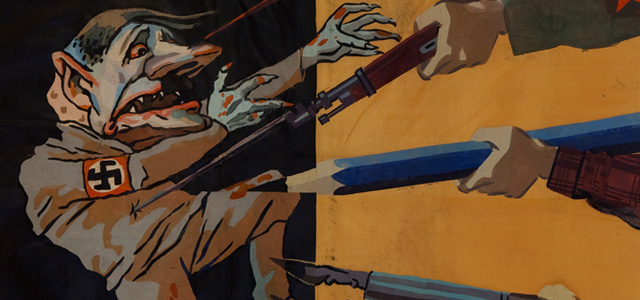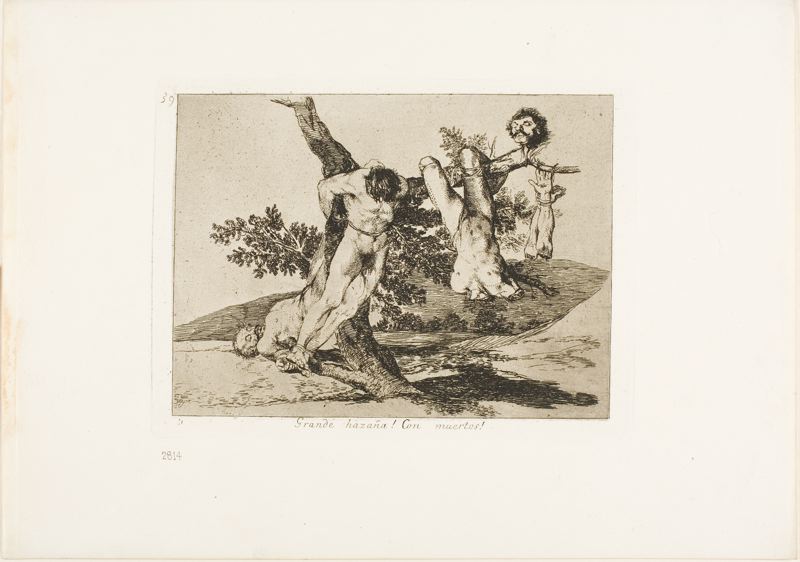“Some art depicts war. Some art ends it,” declares a sign outside the Art Institute of Chicago, beckoning visitors to experience two moving exhibits that close on Sunday. The first is a gigantic display of strikingly large-scale propaganda posters that appeared in the windows of Moscow’s TASS News Agency during the Second World War. The posters, created by a collective of artists and writers, chronicled the war and aimed to encourage Soviet citizens.
The second exhibit, Belligerent Encounters, displays European and American prints, posters, and drawings spanning almost 500 years of war and revolution. These horrendous images are the stuff of nightmares and leave nothing to the imagination; they show atrocities and suffering of war as graphically as any video we see today.
Which makes me sad – because with all this knowledge of what war does, with artists working at the full force of their powers to scare and intimidate us from perpetrating future terrors, these images seem to have done nothing to stop brutal conflict in the world.
The most we can say about the TASS windows is that they depicted the stages of the war, and did something to keep up the spirits of the Russian people. But they certainly did not end WWII.
Art often depicts the horror of war. Art often is used to rally a population – for good or for ill. But can art really start a war or end one? That’s today’s question. Take the survey, and share your comments below.
Images: Photo taken outside the museum; Poster from the TASS windows; Francisco José de Goya y Lucientes, “A Heroic Feat! With Dead Men!,” plate 39 from The Disasters of War, c. 1812/15, published 1863.


